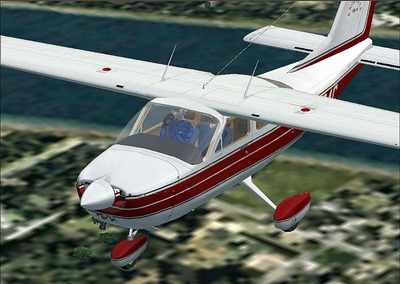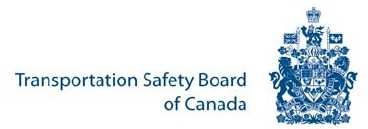One Mystery Gains A Clue While Another Remains Unsolved
A portion of an aircraft’s wing found in a remote area of
Nova Scotia provided a piece of the puzzle to the investigation of
a crash that happened over thirty years ago.

Royal Canadian Mounted Police Constable Dal Hutchinson reports
that a battered wing was found by a crew cutting a logging road
through a forested area about four miles west of Joggins, Nova
Scotia.
"I learned about it by a third party. That person asked me to
look into it because he had relatives that were lost when an
aircraft went down off Advocate (Harbour) in 1967," Hutchinson
said.
The Nova Scotia Chronicle Herald reports the missing aircraft
was described as a Beechcraft that had taken off from Halifax on
July 23, 1967 destined for Sussex, New Brunswick, with five people
aboard.
"That plane has never been found. The family was hoping the wing
came from the missing plane, [and] could help solve the mystery of
why it crashed and could help bring closure to the families of the
people on board that disappeared when it crashed," Hutchinson
said.
Visiting the crash site, Hutchinson took pictures of the wing
and sent them to the Transportation Safety Board of Canada. Safety
Board spokesman Mike Cunningham said officials quickly determined
the wing did not belong to the missing Beechcraft. "We determined
it came from a Cessna Cardinal," he said.
Retrieving the wing from the woods last week, TSB officials
began trying to determine its origin. Markings on it indicated it
probably came from the United States, the CH reported.
Halifax Rescue Co-ordination Centre records showed that a Cessna
177 Cardinal from the US had crashed near Joggins in 1976, near
where the wing was recently found. "Part numbers from the wing
confirmed it had come from the Cessna," Cunningham said.
Records of the TSB investigation revealed the Cessna departed
Northwood Memorial Airport near Norfolk, MS on July 8, 1976.
Despite a massive search by American officials, the crash site was
not discovered until spotted by a Canadian military aircraft flying
over it three and a half months later, the CH said.
Stories in The Chronicle Herald in October 1976 identified the
pilot of the Cessna as 33-year-old Robert Lindsted from Framingham,
MS. He had been a pilot for seven years and held an instrument
rating.
The RCMP investigating the crash in 1976 found a "heavily
damaged aircraft that had nosedived into the ground," the newspaper
articles said. "Police found jeans, tennis shoes and a wallet
containing Mr. Lindsted’s pilot’s license at the crash
site, but it was another month before skeletal remains were found
about two miles away."

Cunningham said, "The pilot’s injuries, and the fact that
his clothes were found at the crash site and not with his body,
suggested the pilot jumped naked from his plane at a great
height."
The CH reports Hutchinson is happy that TSB investigators were
able to determine the origin of the wing, but wishes it had come
from the missing Beechcraft. "It would have given the family some
closure, but for now the mystery of that crash remains," he
said.
 Sierra Space Repositions Dream Chaser for First Mission
Sierra Space Repositions Dream Chaser for First Mission ANN's Daily Aero-Term (05.10.24): Takeoff Roll
ANN's Daily Aero-Term (05.10.24): Takeoff Roll Aero-News: Quote of the Day (05.10.24)
Aero-News: Quote of the Day (05.10.24) Aero-News: Quote of the Day (05.11.24)
Aero-News: Quote of the Day (05.11.24) ANN's Daily Aero-Term (05.11.24): IDENT Feature
ANN's Daily Aero-Term (05.11.24): IDENT Feature




